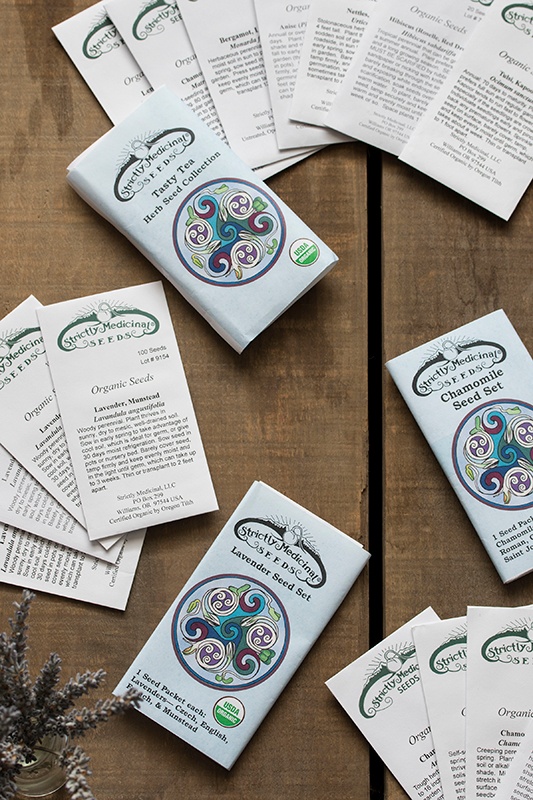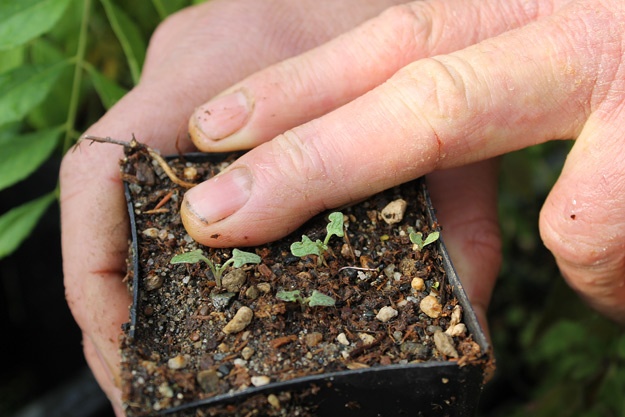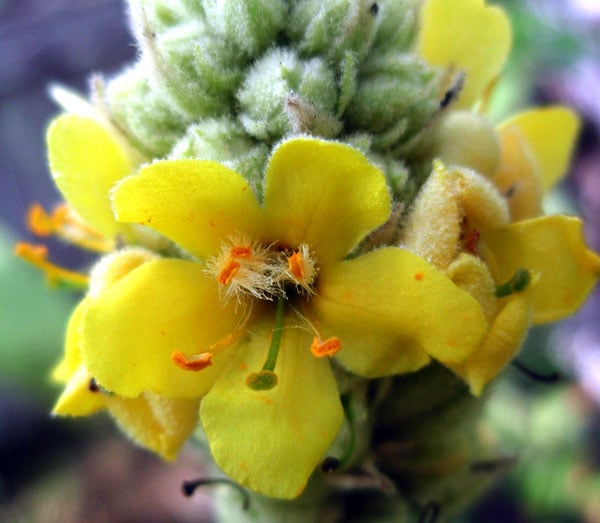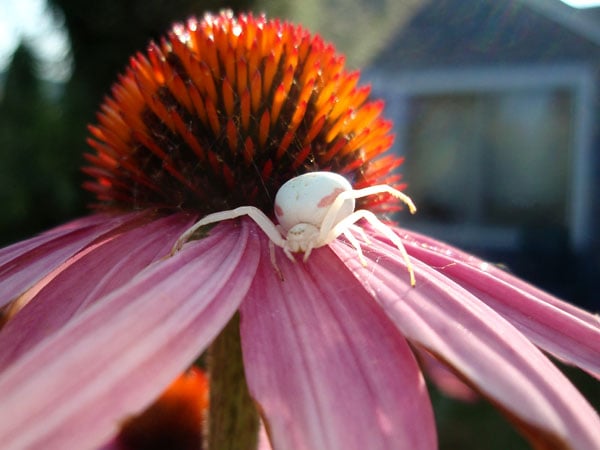Starting herbs from seed can seem a little daunting! While we may be used to starting some summer vegetables in the window sill, the idea of starting yarrow, lavender or arnica plants from seed may seem a little mysterious. It doesn’t have to be. Like other plants, you just need to give them what they need and soon you will have a garden overflowing with all your favorite botanical friends!It helps to know a little bit about how the plants grow in their natural environment, as this will guide the seed propagation. Some seeds need cold to germinate while others crave some warmth and luxury. Some plants, like Catnip, like to be planted where they are to grow and they are happiest planted directly into the ground or garden bed.
Starting Seeds Indoors
- Choose a growing medium. Many experts recommend using a soil-less compost or potting soil. I like to mix some purchased potting soil (for lightness) with compost from my home compost. My theory is that the seeds will start to get acclimated to their future environment from the beginning and I hope it will make them stronger. I don’t know if there is any science to support this, but it works well for me.
- Choose pots, flats, recycled egg containers, or some other clean, proper-sized containers for starting seeds. If you have used them before, be sure they are clean (I like to do a final rinse with white vinegar) so you won’t be spreading any diseases to the new seedlings.
- Check to see if the seeds need any pre-treatment such as freezing or soaking in water. Parsley seed, for example, needs to be soaked in warm water for about 24 hours prior to planting.
- Dampen the soil with a spray bottle or a light watering from a watering can prior to planting.
- Place 2 or 3 seeds in each pot or section. I like to cover them lightly with more damp soil instead of poking them into the soil.
- Give the newly-planted seeds another spritz of water.
- Be sure to label! I like to add the date, so I can keep track of the seedlings' progress. They don’t have to be fancy labels to do the trick.
- Depending on how the plant prefers to germinate, you can cover with plastic wrap, place on a heating pad, put under a grow light, put in a window sill, or start in a greenhouse. The seed packets will tell you the proper temperature for germination and how long you can expect before you see those first leaves - also called cotyledons.
- Keep the soil from drying out by giving it a spritz of water regularly.
- Once the seeds have germinated, remove any plastic covering and adjust the growing conditions to meet the needs of the plant (for example, Basil likes it warm and moist, while Lobelia likes lots of water!) As the seedlings grow, they will either need to be transplanted to a larger pot or out into the garden at the proper time.
Direct Seeding
Many herb seeds do very well being seeded directly into the garden and some want to be seeded in the late summer or fall so they can winter over and start to grow in the spring. Milk Thistle is a perfect example. In nature, the plant drops the seeds in the late summer and they find homes in the soil where they wait out the winter temperatures and then take off when the spring comes. So, we can scatter the seeds in an out-of-the way corner of the garden (Milk Thistle can cultivate itself rather easily and it can be a bit of bully, so a little diligent containment may be in order) in the autumn and watch for the seedlings the following spring!
While Calendula grows just fine when seeded directly, the seeds don’t do well if they freeze. This is one that I scatter all over the garden, but I wait until early spring and lightly rake the seeds into garden beds. I try to grow some against the warmest corners of the house as that extra warmth will sometimes keep the plants alive through a mild winter. While they love the sun, they don’t mind cool, they just don't like it terribly cold.
We have a bit of information on our website about the best way to propagate the seeds we offer from Horizon Herbs. The seed packets have even more information. There are many wonderful books on growing herbs like Homegrown Herbs and The Medicinal Herb Grower. There is plenty of information about growing herbs from seed, but also information on how to propagate lavender, rosemary, and sage from cuttings!
Growing herbs from seed can be a rewarding and economical way to create the garden of your dreams. I find it helps to remember that many of these herbs are considered “weeds” by many—they thrive in meadows, ditches, along riverbanks and like the wonderful Mullein, along gravely roadsides. If I can give them what they want, they will be as happy in my garden as they are in the wilds!
Shop our Traditional Seed Collection!














